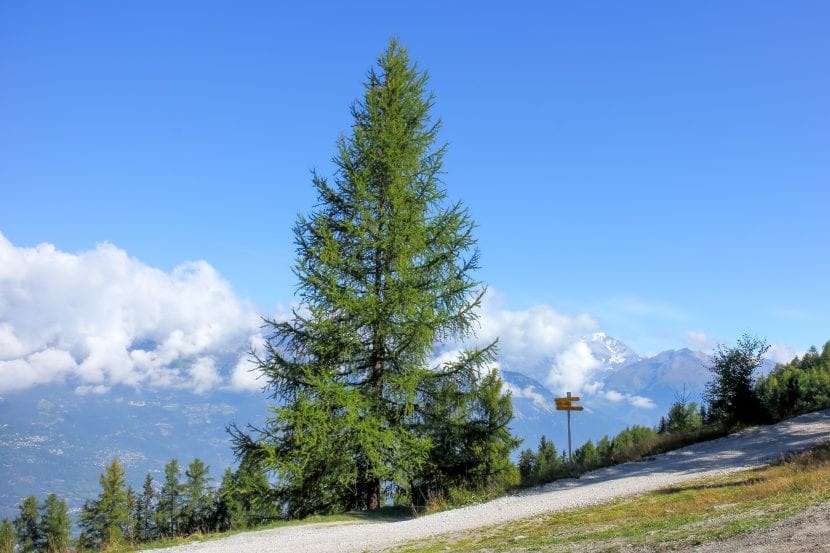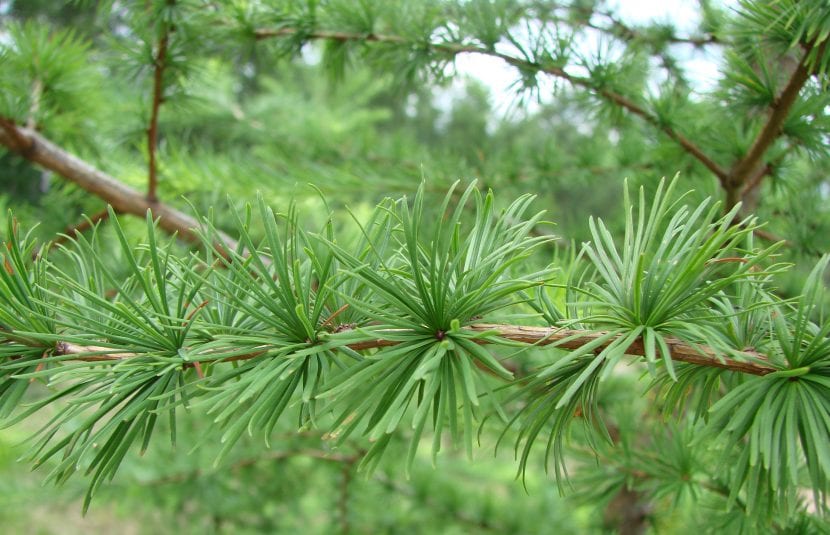
Image - Wikimedia / Dominicus Johannes Bergsma
El larch tree It is a very slow growing plant that, in addition to having a very high ornamental value, its life expectancy can be very long; in fact, specimens have been found that are over a thousand years old.
Its maintenance is not complicated, as long as the climate in which it is being cultivated is suitable. And it is that this magnificent plant does not tolerate heat too well; not in vain, it is typical of the mountains.
Origin and characteristics

Larch trees are conifers of the Pinaceae family belonging to the genus Larix, which comprises between 10 and 14 species native to the forests of northern Eurasia and North America (especially Canada). They can reach a height of between 15 and 50 meters. Its leaves are acicular, soft, bright green except in autumn when they turn yellowish, and are deciduous.
Main species
Of all there are, the most popular are:
- Larix decidua: known as European larch or larch, it is a species native to the mountains of Central Europe. It reaches heights between 25 and 55m, with a trunk thickness of up to 2m.
- Larix kaempferi: known as larch of Japan, or Karamatsu in this language, it is a native species of the mountains of the center of Honshu, in the Japanese country. It reaches a height of between 20 and 40 meters, with a trunk up to 1m in diameter.
- laurix laricina: known as eastern larch, black larch or tamarack larch, it is a species native to the northern United States and Canada. It grows from 10 to 20 meters, with a trunk up to 60cm thick.
Uses
The larch tree has several uses:
- Ornamental: Although they are plants that take up a lot of space, they are very decorative. Planted as isolated specimens they are perfect. But in addition, they can be worked as bonsai.
- Wood- It is strong and durable, as well as flexible in thin strips. It is used to make furniture, rackets, and other objects.
- Medicinal: There are some species, such as L. laricina, which in their places of origin have been used to treat infected cuts and wounds, as well as arthritis.
What are their cares?

If you want to have a larch tree, we recommend that you provide it with the following care:
- Location: outside, in semi-shade. If you live in an area of high altitude, 1000 masl or more, you can have it in the sun.
- Earth:
- Garden: the soil must be fertile, well drained, and slightly acidic.
- Pot: use growing medium for acidic plants, or akadama mixed with 30% perlite if the weather is not good.
- Irrigation: it has to be watered about 4 times a week in summer, a little less the rest of the year.
- Subscriber: from the beginning of spring to the end of summer it is advisable to fertilize it with fertilizers for acid plants, following the indications specified on the packaging. In case of having it on the ground, it is advisable to pay it with Organic fertilizers.
- Multiplication: by seeds in winter.
- Rusticity: it resists temperatures down to -40ºC without problems, but it cannot live in hot climates.
What did you think of this plant?